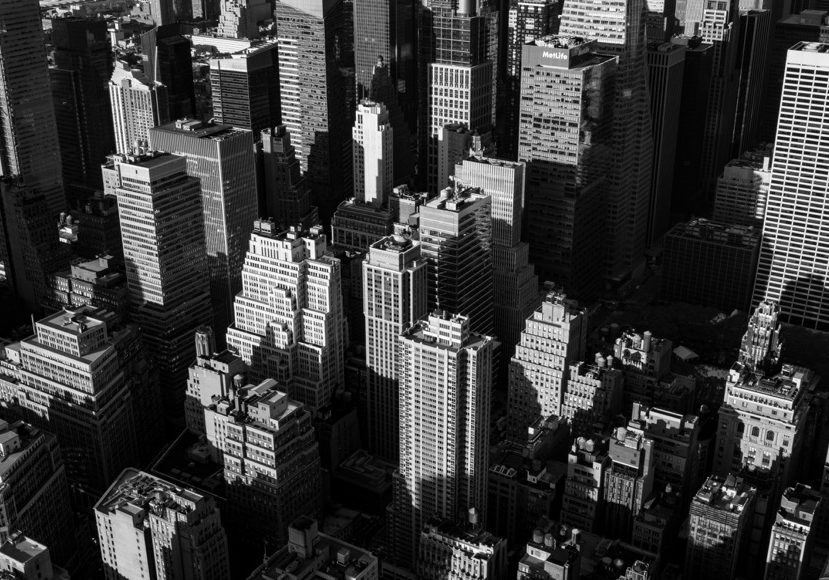
Black and White Photography Tips, Styles and Examples
Discover everything there is to know about black and white photography, including 5 tips to creating powerful B&W images both in-camera and via software.
Learn | Photography Guides | By Andy Day
Learning how to shoot and edit black and white photography is an essential skill for photographers.
A black and white photo is a monochrome photo – i.e. an image which has had all color removed. This can be via digital editing, the selection of film, or by using a specific camera.
Black and white photography uses different tones of grey, ranging from white to black.
By removing the distraction of color, B&W photos are simplified which can result in something more powerful and compelling.
Great black and white photography tells a story, highlights a subject and reveals true human emotions.
In this guide, we’ll answer all the main questions on the topic, as well as include some examples of black and white portrait photography, landscape photography and street photography for your inspiration.
Let’s dive in and learn more about this classic medium.
Table of Contents
What do you Need for Black and White Photography?
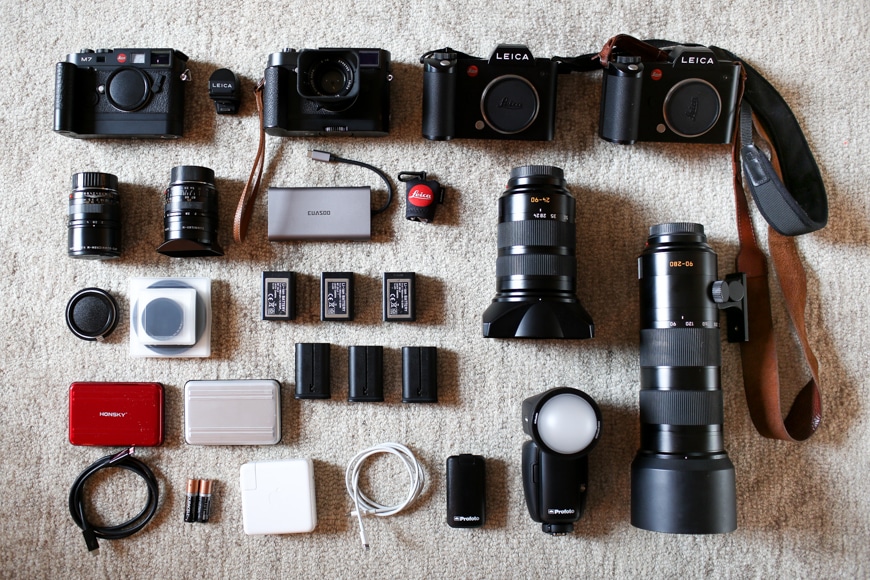
Leica Monochrom and other gear of Phil Penman
Equipment for black and white photography is not that different to color photography.
It doesn’t have to be specialist (unless you want it to be!) and even a basic setup using minimal gear will be enough to get you started.
1. Camera
The obvious place to start! Pretty much any camera will do as the vast majority of black and white images are captured in color and converted to black and white during the editing process (more on this below).
A film camera or even your smartphone will do an excellent job.
Like smartphones, some DSLR and mirrorless cameras will allow you to shoot in black and white as you take your photographs.
However, if you’re shooting JPEGs as opposed to Raw files, this does bring some disadvantages.
By choosing to shoot black and white at the moment of pushing the shutter button, you cannot change your mind later on. On the other hand, you can always convert color images to black and white.
Raw files contain far more color information than JPEGs so regardless of whether you set your camera to shoot in black and white or color, the Raw file will give you much more flexibility when you come to edit your photos.
You will be able to change the color temperature and tint, and you will also be able to retrieve more information from the darkest shadows and brightest highlights.
Since there is more color information in a Raw file, you will have more control over the different tones in your photo when you come to convert it to black and white.
If you tell your camera to photograph in black and white but you’re shooting Raw files, you will find that those Raw files are actually color photos when you come to edit them later.
(It’s just the JPEG preview created inside the camera that’s black and white.)
You might then think that telling your camera to shoot in black and white while capturing Raw files is pointless, but some photographers find it useful to see these black and white previews while they are shooting to give them an idea of what’s possible when editing, and help them to think and see in monochrome or greyscale.
There are a couple of (expensive!) digital cameras available to purchase that are built specifically to capture black and white images and depending on the model, you could even have your camera converted to shoot only black and white.
This requires a complex process that involves removing a wafer-thin filter from in front of the sensor.
Black and white cameras tend to create photographs that are slightly sharper and can sometimes capture more tonal information. However, only an experienced photographer will be able to tell the difference!
2. Editing Software
If you shoot in color, you can convert your images to black and white using photo editing software. (If you decide to shoot in Raw, it’s worth checking in advance that your software is able to edit the files.)
There is a wealth of options available, ranging from free software such as RawTherapee and Darktable, to powerful, paid packages such as Lightroom and Luminar.
Whatever you choose, the software will have the option to convert a photo to black and white.
Many apps give you a specific set of controls over the different colors in the original image that can be tweaked to create different tones in the final black and white photo.
There’s very little software specifically designed for creating black and white photography from color files, but Silver Efex Pro 2 — part of the NIK Collection (review) — comes close and gives you a lot of control.
3. B&W Film
Black and white film has a rich tradition reaching back to photography’s origins. Of course, you can shoot color film, scan it, and convert it to black and white, but you’d be missing out on film stocks that were created specifically for the purpose.
Plus, black and white film is easier to process at home, requiring fewer chemicals and a far simpler process.
Examples of popular 35mm black and white film stocks include Ilford Hp5, Ilford Delta 3200, Kodak P3200 TMAC and Fuji Neopan ACROS 100.
4. Filters
Colored filters that attach to the front of your lens can affect how colors are perceived by black and white film.
They are less useful when shooting digitally as similar effects can often be achieved during editing, and once added, the effects of a filter cannot be removed.
When Should you Shoot Black and White Photos?
Many famous black and white photographers find themselves shooting black and white photography as a deliberate choice, even if what they capture at the time is in color.
There are various reasons to make this decision – here are a few.
1. When you want to create distance between your photo and reality
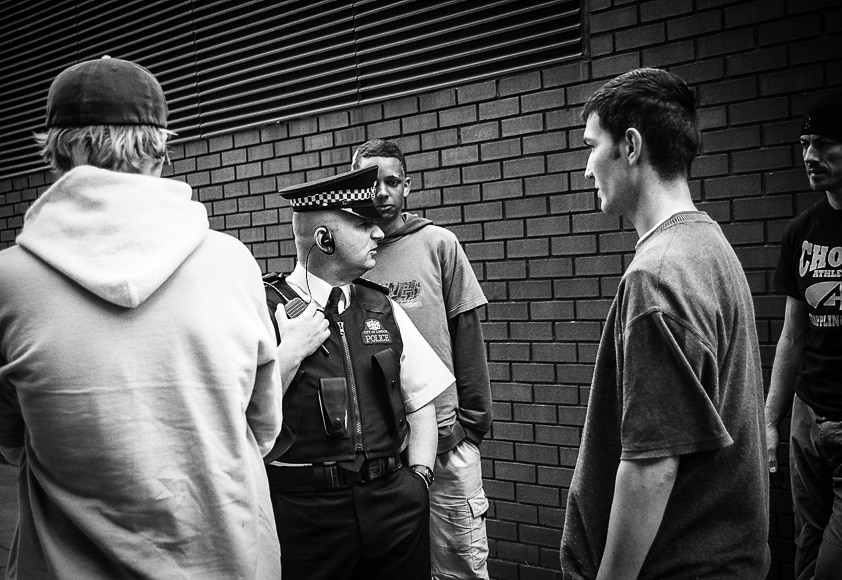
© Andy Day
Black and white photography has a certain impact that is different to color photography.
One reason for this is that it has such a long heritage, prompting most people to associate black and white photography with imagery that is of historical importance, or perhaps with a photojournalistic edge.
Another significant factor is that instead of presenting us with a hyper-real representation of reality, black and white photography creates an additional layer of unreality, drawing more attention to the process of photography itself as a medium and all of the complexities that come with it.
Black and white photography puts a bit of extra distance between us and what is being portrayed, often allowing us to be more reflective and thoughtful in our understanding of what an image is trying to convey.
A photograph already reduces a scene to its visual form, and black and white pushes this even further by stripping away color and, some would argue, making a representation that is even purer.
Shooting in black and white is particularly popular for street photography for this very reason.
2. When there’s a distracting color
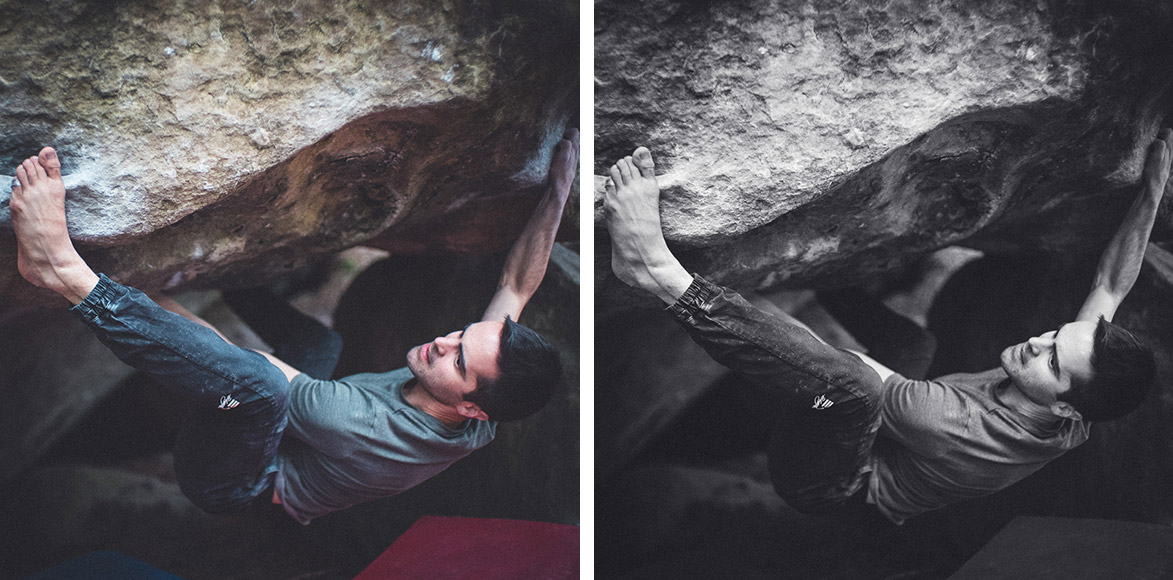
© Andy Day
While we love to capture beautiful light and striking colors, this isn’t always possible, and sometimes color can be a distraction, taking focus away from our subject.
Shooting in black and white avoids this, as it gives a greater sense of unity to the entire image.
All of the tones work together within the frame with black and white photography, rather than one part of the photo screaming for attention because its color is out of place.
The colors you encounter as a photographer are not always complementary and shifting to black and white can be an opportunity to use varying shades that work with one another instead.
3. When shooting at very high ISOs
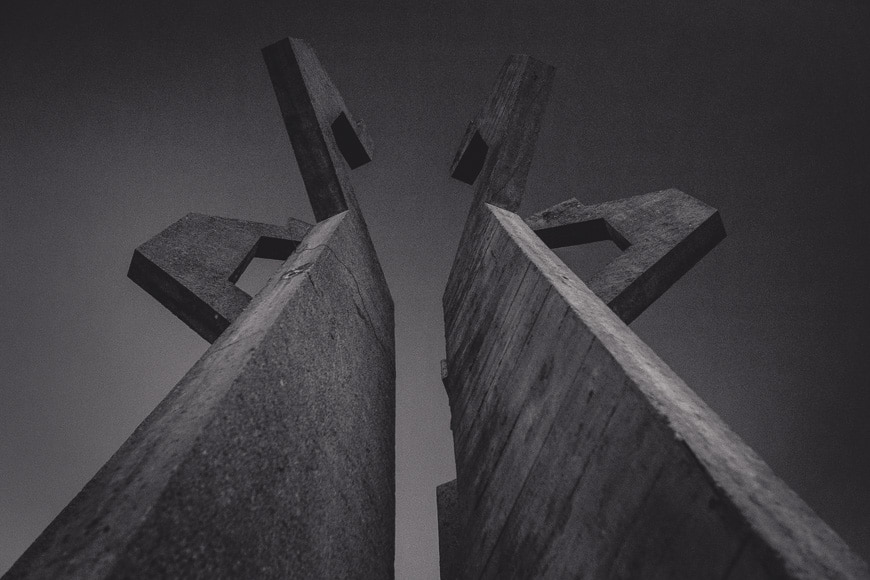
Andy Day
Shooting at very high ISO settings can introduce a lot of digital noise into your images and this can sometimes do strange things.
Often, high ISO images have slightly odd colors that can feel muddy or just slightly wrong. In addition, you might get some random pixels that are simply the wrong color where the camera’s sensor has simply become confused.
Converting a high ISO image to black and white can get rid of these problems and can also make an image look grainy rather than noisy.
Grain is associated with film photography when shooting in dark conditions, and it can give an image a vintage look and feel.
Converting to black and white and tapping into this vintage aesthetic can be quite forgiving when your image quality is suffering as a result of there not being enough light.
4. When texture is more important than color
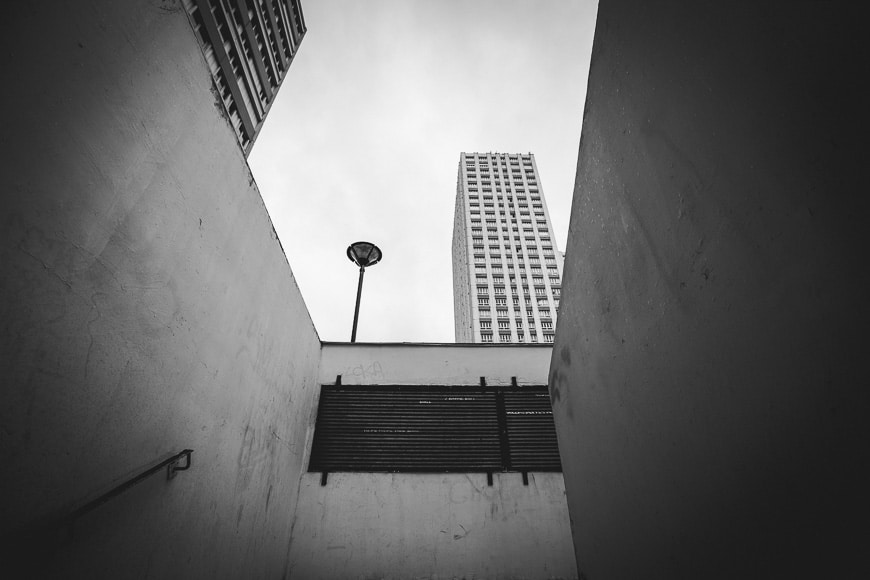
Andy Day
If a photograph is a combination of beautiful textures, perhaps emphasised by the play of light falling across them, colors can actually be a distraction.
Converting to black and white gives you the opportunity to embrace those textures and make them a prominent feature within a photo.
Taking away the color brings them to the fore and gives the viewer a more visceral experience of an image.
5. When geometry is more important than color
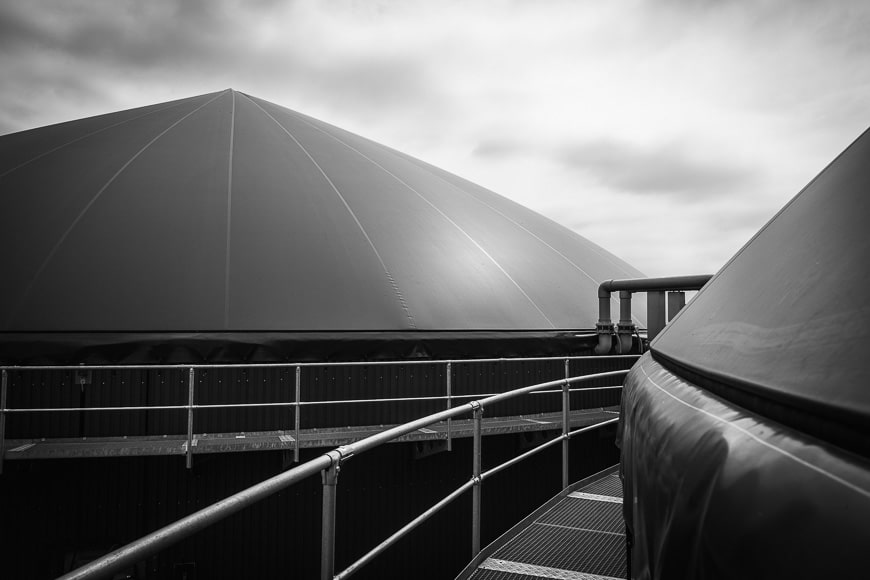
© Andy Day
Photographs that are compositionally strong often feature striking geometric shapes that sit in balance with one another.
Sometimes, color can disrupt these geometric shapes, undermining their purity, and weakening how well a photo comes together.
The human eye tends to enjoy minimalism and simplicity. Removing color and all of its complexities can reduce images to their composite parts, creating simpler, more satisfying photographs.
With street photography where there’s often a lot of visual distraction, this technique can be particularly helpful.
5 Tips for Great Black and White Photography
How do you take black and white photographs? What makes good black and white photography?
Here are 5 tips to make your next monochrome photo really reach out to the viewer and pull them in.
1. Shoot with black and white in mind
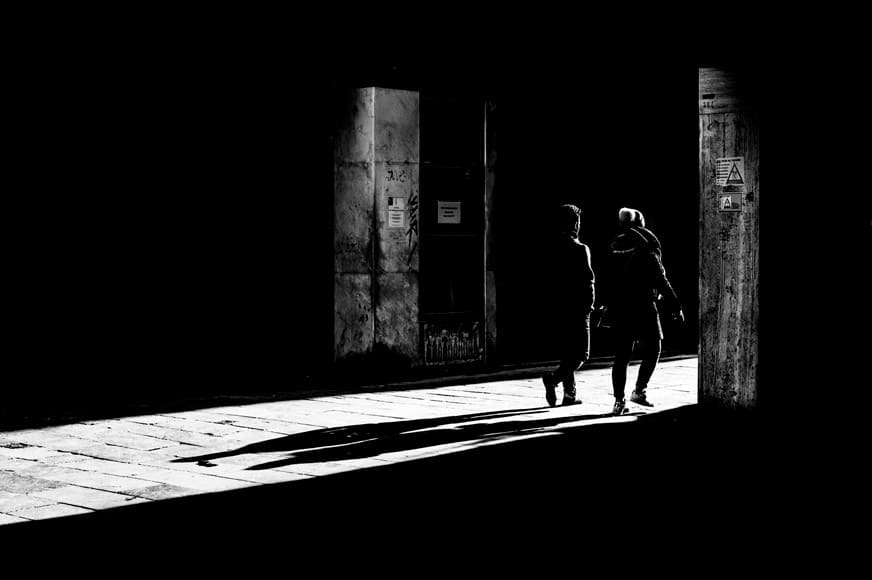
© Marco Chilese
With experience, you’ll come to learn when what you are photographing is going to work best in black and white.
Good photographers are often able to switch into a monochrome mindset, almost converting what they see into black and white before even raising the camera to their eye.
If you’re still building up that experience, try shooting deliberately in the knowledge that the resulting images are going to be in black and white.
Try switching your camera to shooting to black and white so that the images that you see on the back of your camera (and in your EVF if you’re using a mirrorless camera) are already converted.
If you’re shooting Raw, you are still capturing all of the color information; it’s just that what you see while you’re photographing will be in black and white.
Some images simply work better in black and white, but remember that making a photo black and white doesn’t automatically turn it from a bad photo into a good one.
The best black and white photography is black and white for a reason, and finding good reasons to shoot in black and white is about practice and experience.
2. Understand shadow
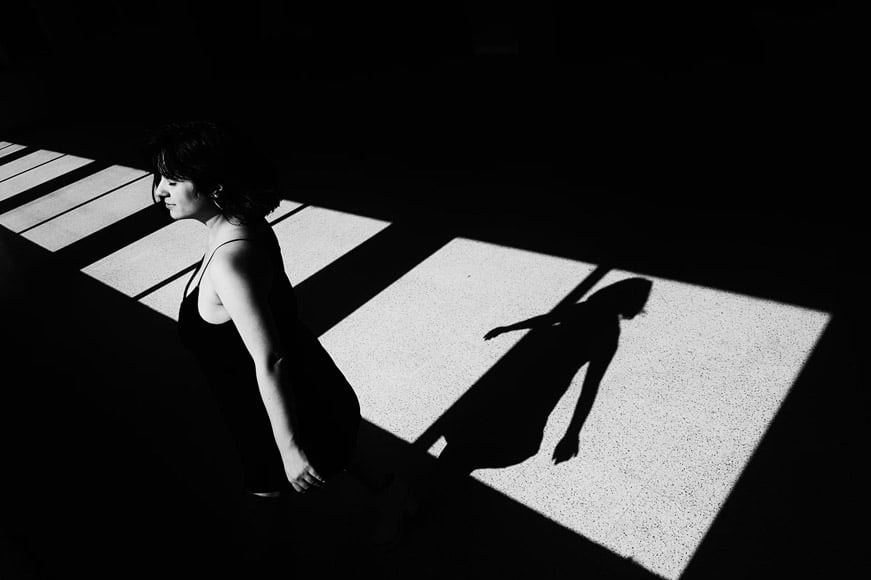
© Fernando Rodrigues
All photography is conveying the balance between light and dark, but this interplay works slightly differently when color is stripped away.
Shadows can carry much more weight within black and white images, creating their own geometric shapes as they clump together and become closer to complete darkness.
These shadows are what help to give an image its structure, almost like mortar binding the areas of brightness to one another and giving them their shape.
In your composition, it might seem secondary, but shadow is what brings all of the parts of your image together.
3. Understand contrast

© Luca Bravo
Contrast isn’t just about how bright the brightest part of an image is in comparison to the darkness; it’s about how these extremes are juxtaposed – juxtaposition is a commonly used photography technique with B&W, since obviously they are directly opposing colours.
If there’s a gradual shift from one to the other, the image can feel calm, even if that transition is from complete black to complete white.
However, if those two contrasting tones are directly placed against one another, there’s a greater sense of energy and drama within an image. The more that they are in direct contrast with each other, the more intense a photograph can feel.
In color photography, the eye is often drawn to the brightest part of an image; in black and white photography, it’s often drawn to the part of the image that has the strongest contrast.
Contrast is largely determined by how a scene is lit and how you choose to expose your photographs, but this can then be drawn out or dialled back during the editing stage.
The best black and white photography matches the contrast to the content of an image, allowing them to communicate together.
4. Understand tonality
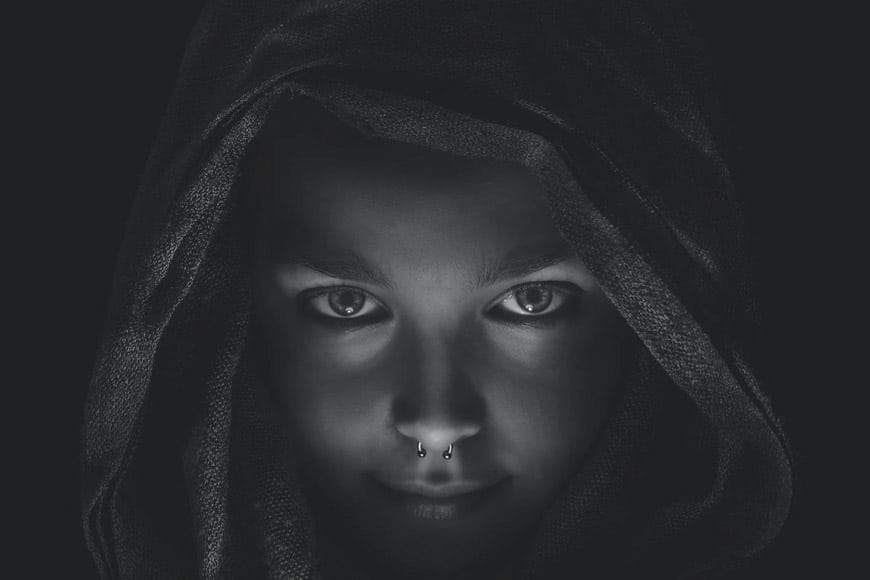
Sebastian Unrau
Connected to contrast is tonality, which describes the gradual shift from one shade to another.
It can be useful to think of a black and white photograph as being made up of varying shades of grey which may occasionally become absolute black or absolute white.
Black and white photography doesn’t necessarily have to have every shade of grey from black to white, and with this in mind, it’s important to note that tonality has a large bearing on the mood of a photo.
If it is mostly dark, it can give a sombre or ominous feel, while a brighter tonality can give a feeling of lightness and ethereality.
Images can even be mostly grey, but without any real contrast, grey images can easily feel dull and not very engaging.
5. Think about emotion
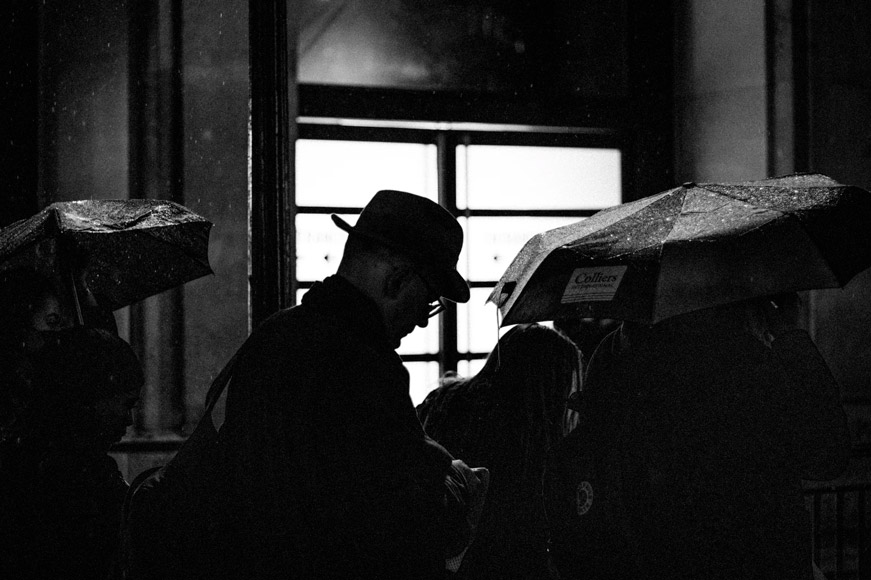
© Alex Motoc
Black and white photography is sometimes thought of as a means of getting closer to the essence of a subject rather than just capturing what is on the surface.
The absence of color somehow allows photos to speak to us on a more emotional level, and your choices as the photographer — both in capturing the moment and in the editing process — will have a bearing on how this emotional connection is conveyed.
Imagine the image above as its color version – subjects could appear banal; colors may grab your attention in the wrong order; textures may be missed.
However, in converting it to black and white, it’s elevated to something mysterious – our emotions are piqued.
How to Make B&W Images using Photo Editing Software
Converting an image into black and white is not as simple as removing all of the colour information. The best software will use post-processing techniques that allow you to draw on the colour information to make subtle changes to the tonality.
You can also “dodge” (make lighter) and “burn” (make darker) parts of your image — terms that come from analog processes for creating black and white prints – see guide.
Pretty much all editing software will create black and white images, but we’ve chosen to show three of the best.
Lightroom and Photoshop requires a subscription to Adobe. We’ve also included Luminar since it might be a better option as it can be bought outright from here.
Lightroom
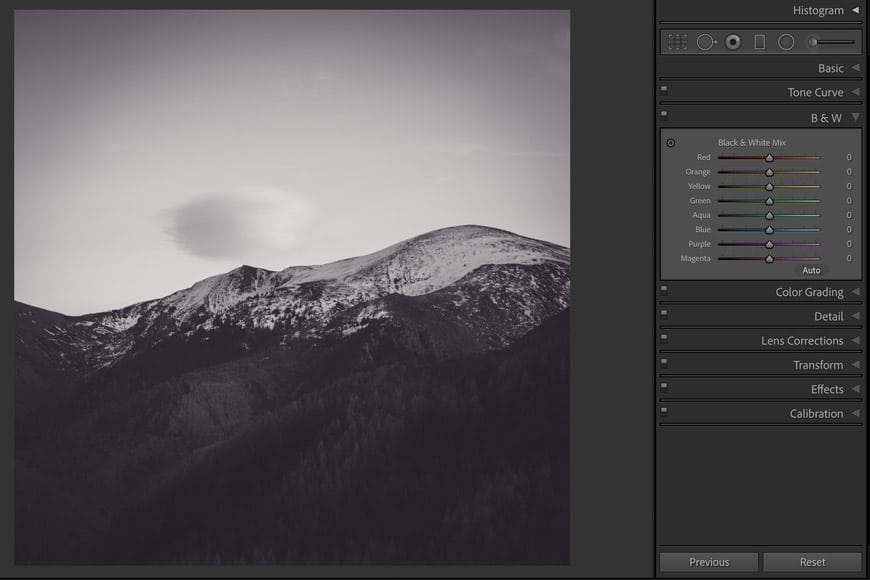
- In the Basic panel, select Black & White (at the top, next to Treatment)
- Make basic adjustments by using the sliders listed under Tone: Exposure, Contrast, Highlights, Shadows, etc
- Refine contrast further using the Tone Curve. Try a very gentle S curve to create more contrast
- Under B&W, adjust the various sliders to shift the tonality of the image according to its original colors
- Under Color Grading, add subtle tones to the highlights and shadows
Photoshop
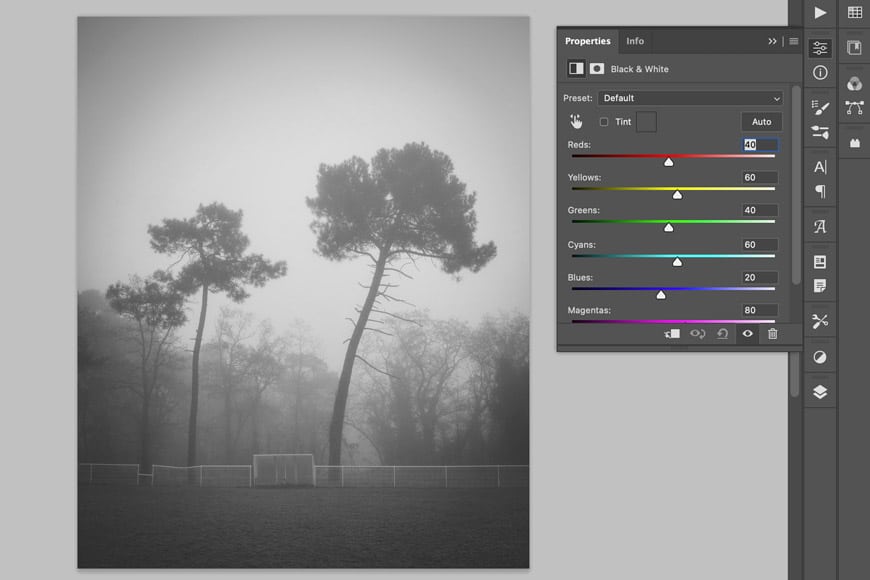
There are various methods for editing black and white photography using Photoshop. One option is to open the image using Adobe Camera Raw (go to Filter, Camera Raw Filter) and follow the same steps as described for Lightroom above.
Alternatively:
- Go to Layer, New Adjustment Layer, Black and White
- Adjust the sliders to shift the tones of the original colors
- Go to Layer, New Adjustment Layer, Curves, and hit OK
- Add points by clicking on the diagonal line across the graph and dragging them gently to change the contrast
- Create a subtle S curve to add more contrast
Luminar
- From the Filters panel, go to Workspace and choose B&W
- Adjust the Exposure and Contrast
- Make further changes to the Highlights/Shadows and Whites/Blacks sliders
- Underneath B&W Conversion, click on Advanced to gain access to filters and color sliders
Famous Black and White Photography Quotes
Much has been said about black and white photography over the years. Here are some of the top black and white photography quotes for your inspiration:
- “Black and white photography erases time from the equation.” – Jason Peterson
- “Black and white photography is truly quite a departure from reality.” – Ansel Adams
- “To see in color is a delight for the eye but to see in black and white is a delight for the soul.” – Andri Cauldwell
- “What I love about black and white photographs is that they’re more like reading the book than seeing the movie.” – Jennifer Price
- “Color is descriptive, black and white is interpretive.” – Eliott Erwitt
- “I’ve been forty years discovering that the queen of all colors is black.” – Henri Mattise
- “Everything always looked better in black and white. Everything always looked as if it were the first time; there’s always more people in a black and white photograph. It just makes it seem that there were more people at a gig, more people at a football match, than with color photography. Everything looks more exciting.”
– Jack Lowden - “While the absence of color may contribute to our appreciation, at the same time it is important to assert that black and white is not photography minus color. Not at all. It’s much more subtle than turning down the color saturation on your television.” – John Beardsworth
For more inspirational photography quotes, click here.
Black and White Photography FAQs
What is the difference between monochrome and black and white?
Very often the terms monochrome and black and white photography are interchangeable, but there is a subtle difference.
Black and white photography has absolutely no colour whereas a monochrome image can have one color of varying shades. An example might be cyanotype – a photographic printing process that creates images made entirely of different shades of blue.
What is the difference between sepia and black and white?
Sepia toning describes the process of adding a hint of color — traditionally brown — to a black and white photograph.
In the past, sepia was added to the black and white photography printing process to help prevent the final print from fading over time.
What color looks best in black and white?
This is very much subjective and how a color appears in black and white will depend mostly on the amount of light falling on it. Colors on the opposite side of the color wheel can look identical!
What photos are best in black and white?
Portraits, street photography, landscapes, abstracts and architecture can all work great as black and white images. The choice to create black and white photography over color should be intentional depending on the subject matter and other variables such as light, texture, contrast, and tonality.
Are black and white photos more flattering?
When shooting portraits, black and white photography can be more flattering as it can help to hide imperfections in people’s skin. It can also tap into a timeless aesthetic that might give a person a refined, classic appearance.
What should you wear to a black and white photoshoot?
As a general rule, try not to create a strong contrast between your skin tone and your clothing. You might also want to check where you will be photographed as you don’t want to blend into the background!
You may want to avoid strong patterns as this contrast might draw attention away from you as a subject.
If in doubt, speak to your photographer!
Final Words
Black and white photography might seem limiting at first but there’s a huge amount to explore and the process can be incredibly satisfying.
Removing the color from a scene reveals new opportunities to play with light, tonality and contrast, and suddenly shadows become an integral part of how a photo holds together.
Free of the distractions of color, black and white photography becomes a study of light, shape, and textures.
Hopefully, this article has inspired you to begin your journey into black and white photography. If you have any thoughts or questions, don’t hesitate to get in touch via the comments below.














